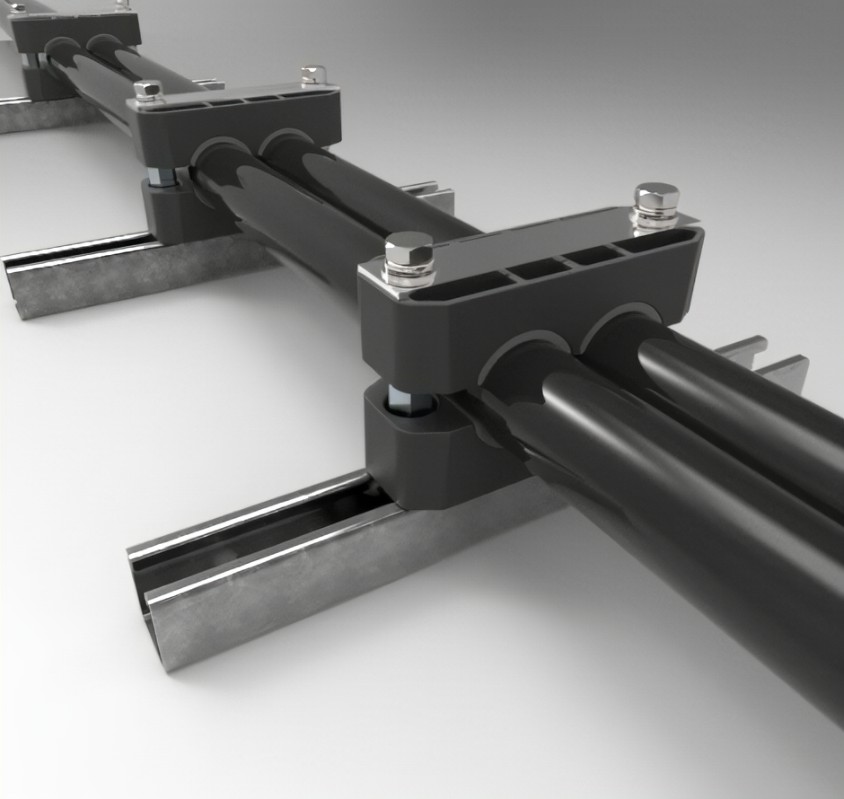Common electrical instruments and tools used by electricians
What are the commonly used electrical instruments and tools in decoration and renovation?
The commonly used tools for electricians refer to those commonly used by professional electricians. For electrical operators, whether they are familiar with and master the structure, performance, usage methods, and standardized operation of electrical tools will directly affect work efficiency and quality, as well as their own or others' personal safety.
The commonly used electrical instruments and tools in decoration are as follows:
(1) Electrical instruments: According to their measurement functions, they can be divided into ammeters, voltmeters, multimeters, megohmmeters, grounding meters, etc.
(2) Electrical tools: wire pliers, pointed nose pliers, diagonal pliers, wire stripping pliers, electric soldering iron, electrical knife, adjustable wrench, etc.
2. What are the common types of tools for low-voltage testers?
(1) Low voltage tester
Low voltage tester, also known as test pen, is a commonly used tool to check whether wires and appliances are live. The detection range is 50-500V, and there are various types of pen type, screwdriver type, and combination type. The low-voltage tester consists of a pen tip, a step-down resistor, a neon tube, a spring, and a metal body at the end of the pen.
(2) The usage methods and precautions of low-voltage voltage testers
1) Before use, it is necessary to check whether the electric pen emits light normally on a conductor with electricity to verify its reliability.
2) It is often difficult to see the glow of neon tubes clearly under bright light, so attention should be paid to avoiding light.
3) Although the tip of an electric pen has the same shape as a screw driver, it can only withstand a small torque and cannot be used like a screw driver, otherwise it will be damaged.
4) Low voltage testers can be used to distinguish between phase and neutral lines, with neon bubbles illuminating the phase line and non illuminating the neutral line. Low voltage testers can also be used to identify grounding faults. If a single-phase grounding fault occurs in a three-phase four wire circuit, the neon bubble will light up when testing the neutral wire with an electric pen; In a three-phase three wire system, test three phase wires with an electric pen. If two phases are very bright and the other phase is not, there may be a grounding fault in that phase.
5) Low voltage testers can be used to determine the level of voltage. The darker the neon bubble, the lower the voltage; The brighter the neon bubble, the higher the voltage.
What are the commonly used tools for high-voltage testers?
(1) High voltage tester
High voltage tester, also known as high voltage tester, mainly includes luminous high voltage tester and acousto-optic high voltage tester. The luminous high-voltage tester consists of a handle, a protective ring, fastening screws, a neon window, a neon tube, and a metal probe (hook).
(2) Precautions for using high-voltage voltage testers
1) Before use, first determine that the rated voltage of the high-voltage tester must be suitable for the voltage level of the tested electrical equipment to avoid endangering the operator's personal safety or causing misjudgment.
2) When using a high-voltage tester for electrical testing, the operator must wear insulated gloves that meet the requirements, hold the part below the protective ring, and cannot test alone. A dedicated person should be assigned to supervise. Similarly, it is necessary to first verify the integrity of the voltage tester on electrical equipment.
3) During testing, it is necessary to prevent accidents such as phase to phase or ground short circuits from occurring; A sufficient safety distance should be maintained between the human body and charged objects. Note that the safety distance for 10kV high voltage is above 0.7m.
4) When using high-voltage testers outdoors, they must only be used in good weather conditions. It is not suitable to use in rainy, snowy, foggy, and humid weather to prevent danger.
What are the types and usage methods of electrician pliers?
Below is a brief summary of the types of pliers used in the construction process of electricians, as well as their specific usage methods.
(1) Steel wire pliers
Steel wire pliers are widely used in electrical work. Jaws can be used to bend or clamp wire ends, teeth can be used to tighten or loosen nuts, cutting edges can be used to cut wires or clamp insulation layers, and side openings can be used to cut wire cores, steel wires, and other harder wires. Precautions for wire pliers: Before use, check whether the insulation of the wire pliers is good, and whether the wire core, wire, and other hard wires are in good condition. Precautions for wire pliers: Before use, check if the insulation of the wire pliers is good to avoid electric shock accidents during live working. When cutting live wires, it is not allowed to use a knife edge to simultaneously cut two wires with different potentials (such as phase and neutral lines, phase and phase lines, etc.) to avoid short circuit accidents.
(2) Pointed nose pliers
Sharp nose pliers are named after their slender head and are suitable for operating in narrow workspaces. Sharp nose pliers can be used to cut smaller wires; Can be used to clamp smaller screws, nuts, washers, wires, etc; It can also be used to shape single stranded wires (such as straight, curved, etc.). If using pointed nose pliers for live work, the insulation should be checked for good condition, and the metal parts should not touch the human body or adjacent live objects during operation.
(3) Diagonal pliers
Specially used for cutting various wires and cables, suitable diagonal pliers should be selected for materials with different thicknesses and hardness.
(4) Stripping pliers
Stripping pliers are tools specifically designed to exploit the insulation layer of smaller wires. When using wire stripping pliers to exploit the insulation layer of a wire, first set the length of the insulation to be exploited with a ruler, then place the wire into the corresponding cutting edge (slightly larger than the wire diameter), and then hold the pliers handle with your hand to peel off the insulation layer of the wire.
What are the methods of using an electric soldering iron?
(1) Precautions before welding
Generally, the oxide layer of the solder joint needs to be removed and soldered with flux to maintain a thin layer of tin at the front end of the solder joint to prevent oxidation, reduce energy consumption, and ensure good thermal conductivity. There is no unified requirement for the grip method of electric soldering irons, which is based on the principle of not being easily fatigued and easy to operate. There are generally two types of grip methods: pen grip and fist grip.
When welding wires with an electric soldering iron, solder and flux must be used. Solder is generally wire shaped or pure tin, and common fluxes include rosin, solder paste, etc.
(2) Basic requirements for welding
The solder joints must be firm, the solder liquid must be fully penetrated, the surface of the solder joints should be smooth and glossy, and "false welding" and "sandwich welding" should be prevented. The reason for "virtual soldering" is that the surface of the solder joint is not cleaned completely or there is too little flux, which prevents the solder from flowing fully, resulting in too little solder hanging on the surface of the solder joint and insufficient fixation between the solder joints; The reason for "sandwich soldering" is due to the low temperature of the soldering iron or the short residence time of the soldering iron during welding, which prevents the solder from fully melting.
(3) Precautions for using electric soldering iron
1) Before use, check if the power cord is in good condition and if it has been burnt out.
2) When welding electronic components (especially integrated blocks), safety measures such as anti leakage should be taken.
3) When the solder joint does not eat tin due to oxidation, it should not be burned hard.
4) When there is too much tin on the solder joint and it is inconvenient to weld, do not throw the tin or strike it.
5) When welding smaller components, the time should not be too long to avoid thermal damage to the components or insulation.
6) After welding, unplug the power plug and place the soldering iron on a metal bracket to prevent burns or fires.
What are the methods of using a digital multimeter?
Digital multimeters have the advantages of high measurement accuracy, intuitive display, full functionality, good reliability, compact and lightweight, and easy operation. They have generally replaced analog multimeters. The following is a detailed introduction.
(1) Panel Structure and Function
Panel diagram of a digital multimeter, including LCD display, power switch, range selection switch, probe socket, etc.
The maximum display value of the LCD display is 1999, and it has an automatic polarity display function. If the polarity of the measured voltage or current is negative, a "-" sign will be displayed before the value. If the input exceeds the range, a prompt of "1" or "-1" will appear at the left end of the display screen.
The power switch can be placed in either the "ON" or "OFF" state as needed. After measurement, it should be placed in the "OFF" position to avoid battery depletion. The battery box of the digital multimeter is located below the back cover and uses a 9V stacked battery. The battery box is also equipped with a fuse tube for overload protection. The rotary range switch is located in the center of the panel to select the testing function and range. When using the buzzer in the meter for on/off inspection, the range switch should be parked in the position marked with the symbol ")))".
The input port is the part where the multimeter is connected to the measured object through the probe, and is equipped with four ports: "COM", "V. Ω", "mA", and "10A". When using, the black probe should be placed in the "COM" socket, and the red probe should be placed in the "V. Ω", "mA" or "10A" socket according to the type and size of the test being tested. Mark the maximum (MAX) measurement values between the "COM" socket and the other three sockets, such as 10A, 200mA, AC 750V, and DC 1000V.
(2) How to use a digital multimeter
When measuring AC and DC voltages (ACV, DCV), connect the red and black probes to the "V. Ω" and "COM" sockets respectively. Rotate the range selection switch to the appropriate position (200mV, 2V, 20V, 200V, 700V, or 1000V), and connect the red and black probes to the circuit being tested (if DC, be sure to connect the red probe to the high potential end, otherwise the left end of the display screen will display "-"). At this point, the display screen displays the measured voltage value. If the display screen only shows the highest digit "1", it indicates overflow and the range should be increased.
When measuring AC and DC currents (ACA, DCA), connect the red and black probes to the "mA" (10A should be connected when greater than 200mA) and "COM" sockets respectively. Rotate the range selection switch to the appropriate position (2mA, 20mA, 200mA or 10A), and connect the two probes in series to the measured circuit (DC, pay attention to polarity). The value displayed on the display screen is the magnitude of the measured current.
When measuring resistance, zero adjustment is not necessary. Insert the red and black probes into the "V. Ω" and "COM" sockets respectively, rotate the range selection switch to the appropriate position, and connect the two probes across the two ends of the measured resistance (note: live measurement is not allowed). The displayed value on the display screen is the value of the measured resistance. When using a 200M Ω range for measurement, first short-circuit the two probes. If the number is not zero, it is still considered normal. This reading is a fixed offset value, and the actual value should be the displayed value minus the offset value.
When conducting diode and circuit on/off tests, insert the red and black probes into the "V. Ω" and "COM" sockets respectively, and rotate the range switch to the diode testing position. In the forward direction, the display screen displays the forward conduction voltage of the diode, in mV (germanium tubes should be between 200-300V, and silicon tubes should be between 500-800mV); In reverse, the display screen should display "1", indicating that the diode is not conducting. Otherwise, it indicates that the reverse leakage current of this diode is high. In a positive state, if "000" is displayed, it indicates a short circuit in the diode, and if "1" is displayed, it indicates an open circuit. When measuring the on/off state of a circuit or device, if the detected resistance value is less than 30 Ω, a buzzing sound is emitted in the meter to indicate that the circuit or device is in a conducting state.
When conducting transistor measurements, rotate the range selection switch to the "hFE" position (or "NPN" or "PNP"), and insert the B, C, and E poles of the tested transistor into the corresponding sockets according to the NPN or PNP type. The value displayed on the display screen is the "hFE" parameter of the tested transistor.
When conducting capacitance measurement, insert the measured capacitor into the capacitor socket, rotate the range selection switch to the "CAP" position, and the value shown on the display screen is the amount of charge of the measured charge.
(3) Precautions for use
1) When the display screen shows "LOBAT" or "←", it indicates that the battery voltage is insufficient and should be replaced.
2) If there is no reading when measuring the current, the fuse should be checked for melting.
3) After the measurement is completed, the power should be turned off. If it is not used for a long time, the battery should be removed.
4) Digital multimeters should not be used or stored in sunlight, high temperature, or high humidity environments. Handle with care when using.
What are the usage methods for clamp gauges and megohmmeters respectively?
(1) Instructions for using clamp watches
The most basic use of a clamp meter is to measure AC current. Although its accuracy is low (usually 2.5 or 5 levels), it is still widely used because it does not require cutting off the circuit during measurement. If direct current measurement is required, an AC/DC dual-purpose clamp meter should be used.
Before using a clamp meter for measurement, the magnitude of the measured current should be estimated to select a reasonable range. When using a clamp meter, the measured current carrying wire should be placed in the center position inside the clamp to reduce errors; The joint surface of the jaws should maintain good contact. If there is obvious noise or severe needle vibration, the jaws can be reopened and closed a few times or the handle can be rotated.
When using, turn the range switch to the appropriate position, hold the rubber handle in hand, and hook the iron core switch with your index finger for easy opening of the iron core. Introduce the tested wire from the gap in the iron core to the center of the iron core, then relax the index finger, and the iron core will automatically close. The current of the tested wire generates alternating magnetic flux in the iron core, and the current is induced in the meter, which can be directly read. Attention: When measuring in a small space (such as a distribution box), it is important to prevent phase to phase short circuits caused by the opening of the jaws.
(2) Precautions for using clamp watches
1) Before use, it is necessary to check whether the appearance is good, whether the insulation is damaged, and whether the handle is clean and dry.
2) Insulation gloves or clean wire gloves should be worn during measurement, and attention should be paid to maintaining a safe distance.
3) Do not switch gears during the measurement process.
4) An ammeter can only be used to measure the current of low-voltage systems, and the voltage of the tested circuit cannot exceed the specified operating voltage of the clamp meter.
5) Only one wire can be clamped in for measurement.
6) Generally, the current of bare wires is not measured.
7) After use, the range switch should be placed in the maximum gear to prevent accidental damage to the instrument due to carelessness during the next use.
(3) Selection of Megohmmeter
The selection of a megohmmeter mainly considers two aspects: first, the need for voltage level. When measuring the insulation resistance of equipment or lines with a rated voltage below 500 volts, a 500 volt or 1000 volt megohmmeter can be used; When measuring the insulation resistance of equipment or lines with a rated voltage above 500 volts, a megohmmeter of 1000-2500 volts can be used; When measuring porcelain bottles, a 2500-5000 volt megohmmeter should be used.
(4) How to use a megohmmeter
There are three terminals on the megohmmeter, with E (ground) and L (line) marked on the two larger terminals, and G (shielding) marked on the other smaller terminal. Among them, L is connected to the conductor part of the tested equipment or circuit, E is connected to the shell or ground of the tested equipment or circuit, and G is connected to the shielding ring of the tested object (such as the insulation layer between cable shell cores) or the part that does not need to be measured.
1) Before measurement, cut off the power supply of the tested equipment or circuit and fully discharge its conductive part to the ground. Electrical equipment that has been measured with a megohmmeter must also undergo grounding discharge before being measured or used again.
2) Before measuring, check if the instrument is in good condition: separate the terminals L and E, and shake the handle from slow to fast for about 1 minute to stabilize the generator speed (about 120 revolutions per minute) in the megohmmeter. The pointer should point to the ":" position; Short circuit L and E again, slowly shake the handle, and the pointer should be pointing to "O".
3) When measuring, the megohmmeter should be placed horizontally and steadily. During the measurement process, do not touch the measuring part of the object with your hands to prevent electric shock.
(5) Precautions for using a megohmmeter
1) The connecting wires between the tested object should be multi stranded copper core flexible wires with good insulation. Double stranded insulated wires or twisted wires should never be used, and the connecting wires should not be twisted together to avoid inaccurate measurement data.
2) The generator should maintain a constant speed and should not cause the pointer to swing continuously, either fast or slow.
3) During the operation, if the pointer is found to be zero, it indicates that the insulation layer of the tested object may break through and short circuit. At this time, stop continuing to shake the handle.
4) When measuring equipment with large capacitance, do not immediately stop shaking the handle after reading, otherwise the charged capacitor will discharge the megohmmeter and may burn the instrument.
5) Humidity, the condition of the tested object, and other factors have a significant impact on insulation resistance. To facilitate analysis and comparison, the recording of data should reflect the above situation.
What are the usage methods of other tools?
(1) Electrician knife
Electric knife is a commonly used cutting tool by electricians. A regular electrician's knife consists of a blade, blade, handle, and hook. When not in use, retract the blade into the handle.
When using an electrician's knife to cut the insulation layer of a wire, the knife can be slightly raised and the rounded corners of the blade can be pressed against the wire core. Never cut the insulation layer with the blade perpendicular to the wire, as this can easily damage the wire core.
Before connecting the wires, the insulation on the wires should be stripped off. When using an electrician's knife to cut and peel, do not damage the core wire with the cutting edge. Therefore, commonly used exploitation methods include stage stripping and oblique cutting.
The exploitation of the outer insulation of the double core sheathed wire can be achieved by aligning the blade with the middle part of the two core wires and cutting the wire in half.
(2) Adjustable wrench
The adjustable wrench, also known as the adjustable wrench, is a tool used to tighten or loosen angled screws or nuts. Electricians commonly use three types: 200mm, 250mm, and 300mm. When using them, they should be selected according to the size of the nut.
When using, hold the handle with your right hand. The farther back your hand is, the easier it is to pull. When pulling the small nut, it is necessary to continuously rotate the worm gear to adjust the size of the wrench opening. Therefore, the hand should be held close to the blank wrench lip and the worm gear should be adjusted with the thumb to fit the size of the nut. When the wrench opening of the adjustable wrench clamps the nut, the blank wrench lip should be on top and the flexible wrench lip should be on bottom. The wrench should not be used in reverse. When pulling a rusted nut, a few drops of kerosene or engine oil can be added to the nut to make it easier to tighten. When it cannot be twisted, do not use a steel pipe to cover the handle of the adjustable wrench to increase torque, as this can easily damage the adjustable wrench lip.
(3) Integral wrench
Holistic wrenches include square, hexagonal, and dodecagonal (commonly known as ring wrenches). Among them, the plum blossom wrench is widely used in rural electricians. It can change the direction of the wrench as long as it is turned 30 degrees, making it more convenient to work in narrow areas.
A ring wrench, commonly known as an eye wrench, is used for disassembling hexagonal nuts or bolts. The disassembly and assembly of hexagonal nuts or bolts located in slightly concave areas is particularly convenient.
A socket wrench is composed of a set of plum blossom tubes of different sizes, which are continuously rotated with a bow shaped handle during use, resulting in high work efficiency. When the size of the screw or nut is large or the working position of the wrench is narrow, a ratchet wrench can be used. This wrench has a very small swing angle and can tighten and loosen screws or nuts. Turn the handle clockwise when tightening. A square sleeve is equipped with a support rod. When the handle is pulled back in the opposite direction, the support rod slides out in the slope of the ratchet teeth, so the screw or nut will not follow the reverse direction. If you need to loosen screws or nuts, simply flip the ratchet wrench and turn it counterclockwise.
Hexagonal wrench is used for assembling and disassembling large hexagonal screws or nuts, and can be used by external electricians to load and unload steel frame structures such as iron towers. An internal hexagon wrench is used to install and remove internal hexagon screws. Commonly used for the disassembly and assembly of certain electromechanical products.








Please first Loginlater ~